
Roots
The quiet hours of night hold a particular influence over our textured strands, a period often overlooked in the broader discussion of hair care. As the world settles into slumber, the very air around us continues its subtle dance, and this nocturnal atmospheric moisture, or humidity, plays a distinct role in shaping the waking reality of coils and curls. It is a relationship both delicate and profound, one that beckons us to consider the elemental truths of hair at rest. Our hair, a living echo of our heritage and personal expression, responds to these unseen forces with an honesty that speaks volumes upon morning’s arrival.
To truly appreciate how air humidity affects textured hair at night, we must first journey into the intrinsic make-up of the hair fiber itself. Textured hair, particularly Afro-textured hair, possesses a unique helical structure, often appearing flattened or elliptical in cross-section rather than perfectly round. This distinctive shape, along with varying degrees of curl pattern, influences how moisture interacts with each strand. The outermost layer, the cuticle, resembles tiny shingles on a roof, and its condition is paramount.
When healthy, these cuticles lie flat, providing a smooth surface that reflects light and seals in moisture. However, when compromised by dryness or damage, these cuticle scales lift, creating pathways for external moisture to enter or internal moisture to escape.
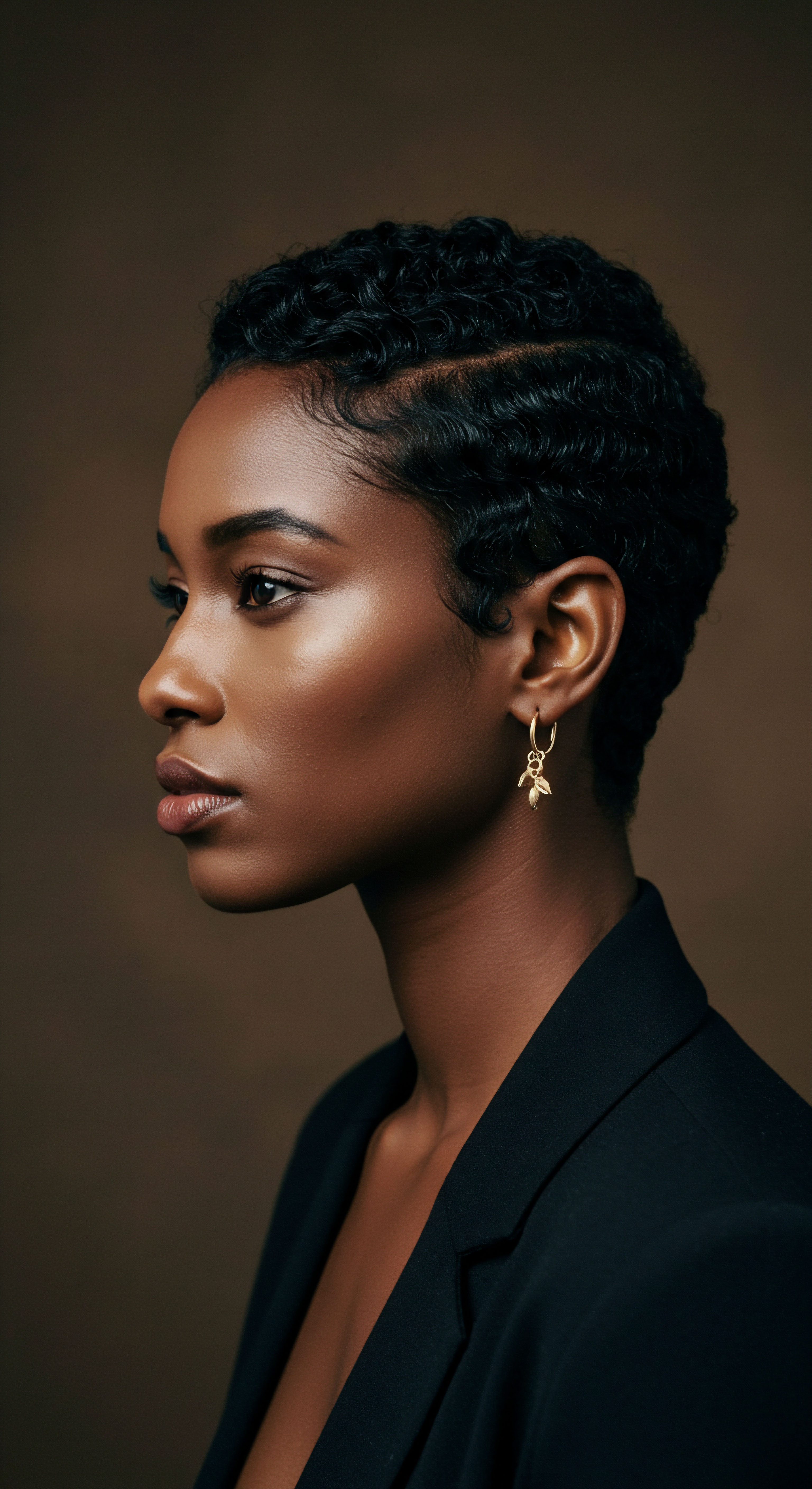
Hair Anatomy and Moisture Dynamics
The cortex, the inner bulk of the hair strand, comprises coiled bundles of keratin proteins. These proteins are held together by various chemical bonds, some permanent, others temporary. Among the temporary bonds are hydrogen bonds, which are particularly sensitive to water.
When hair encounters moisture, these hydrogen bonds can break and reform with water molecules, causing the keratin structures to shift. This phenomenon is why hair can be restyled when wet and why humidity has such a noticeable impact.
The degree to which hair absorbs water from the air is known as its hygroscopic nature. Textured hair, with its raised cuticles and varied porosity, often exhibits a higher affinity for atmospheric moisture. This means that as relative humidity levels change, especially overnight when hair is often left undisturbed for hours, textured strands are highly susceptible to absorbing water from the surrounding air.
Hair’s interaction with nighttime humidity is a quiet conversation between external moisture and internal protein bonds.
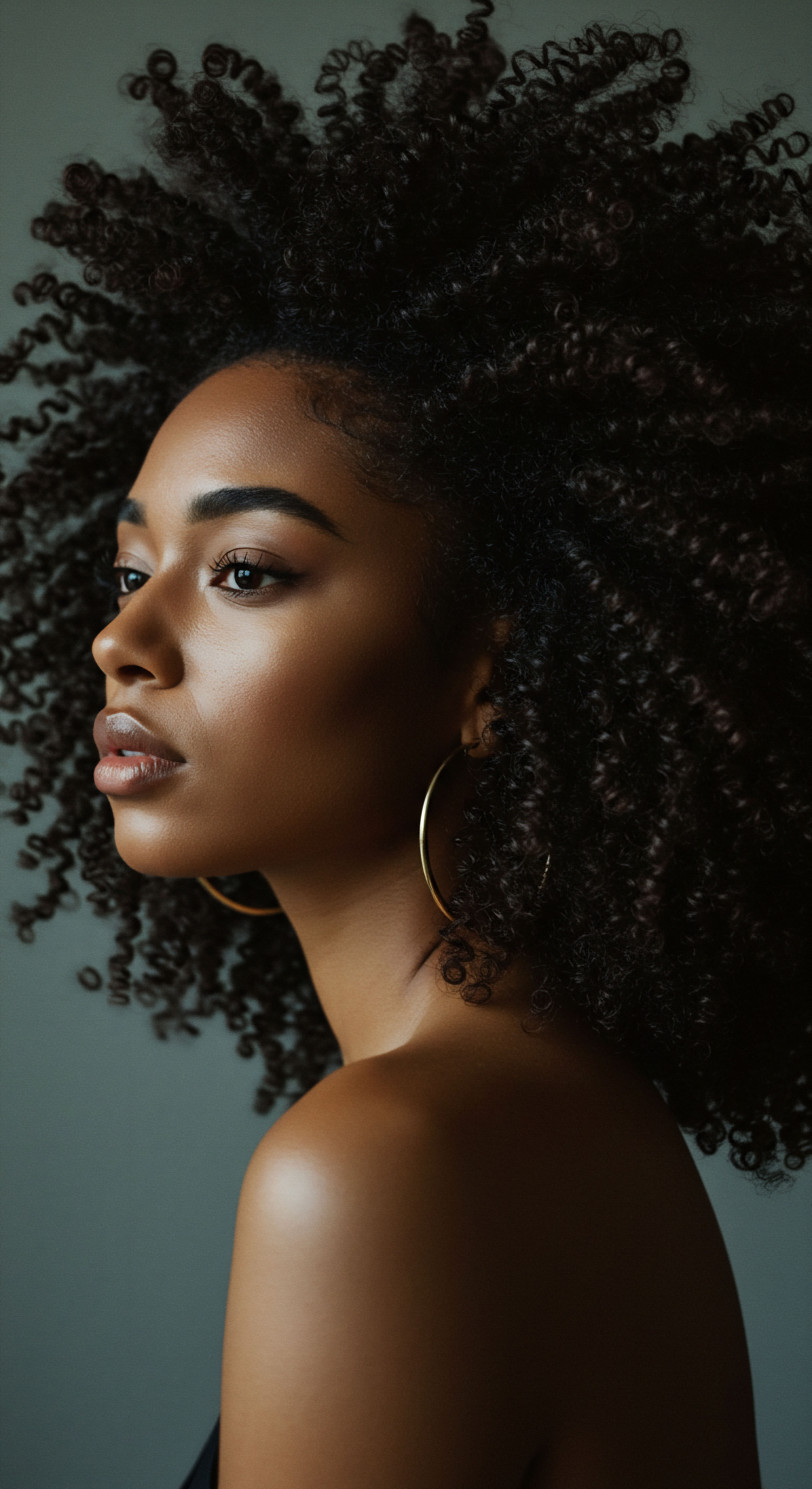
Understanding Textured Hair Classification Systems
The world of textured hair is beautifully diverse, often categorized into types 2 (wavy), 3 (curly), and 4 (coily/kinky), with further sub-classifications (a, b, c) denoting the tightness of the curl pattern. Each type presents its own unique considerations when it comes to humidity. For instance, tighter curl patterns (like 4c) naturally have more exposed cuticle surface area due to their numerous bends and turns, potentially making them more prone to moisture gain or loss depending on the environment.
- Type 2 Hair ❉ Wavy strands that can gain definition from some humidity, but excess moisture can lead to loss of shape.
- Type 3 Hair ❉ Curly hair with spiral structures, highly susceptible to humid conditions due to more exposed cuticles.
- Type 4 Hair ❉ Coily and kinky hair, often prone to dryness, can swell significantly in high humidity, disrupting patterns.

The Language of Hair’s Response
In discussions of textured hair and humidity, certain terms help us speak with clarity about what unfolds. Frizz, for example, is the common visual outcome when hair absorbs too much moisture, causing the cuticle to swell unevenly and strands to stand away from the main body of hair. This uneven swelling occurs because the hydrogen bonds within the keratin shift, altering the hair’s temporary shape.
Another term is Hygral Fatigue, which describes the stress hair experiences from repeated swelling and shrinking due to constant moisture absorption and release. This can compromise the hair’s integrity over time, leading to damage.
Consider the subtle expansion of a hair fiber. Research indicates that keratin, the primary protein in hair, can absorb up to 40% of its own weight in water. This absorption results in a swelling of the hair, with a measurable increase in its diameter—typically 10-15%—and a slight increase in length, around 0.5-1.0%. This dimensional alteration is a direct physical manifestation of the hair’s interaction with environmental moisture.
| Hair Property Water Regain |
| Response to Moisture Absorption Increases linearly with rising relative humidity (40-85% RH) |
| Hair Property Diameter |
| Response to Moisture Absorption Increases by 10-15% with water absorption |
| Hair Property Length |
| Response to Moisture Absorption Increases by 0.5-1.0% with water absorption |
| Hair Property Elasticity |
| Response to Moisture Absorption Decreases linearly with rising relative humidity (50-80% RH) |
| Hair Property These changes illustrate the dynamic physical response of hair to ambient moisture. |

Ritual
As twilight descends and the day’s pursuits subside, our attention often turns inward, toward the quiet rhythms of preparing for rest. For those with textured hair, this transition from day to night is not merely a shift in pace; it is a sacred opportunity to honor and preserve the delicate structure of our strands against the invisible forces of the atmosphere, particularly nocturnal humidity. The wisdom we gather from daily experience, refined through generations, guides our hands in these nightly rituals, transforming simple acts into profound gestures of care. This section will guide you through the practical considerations and thoughtful choices that can shape your hair’s journey through the night, ensuring it greets the morning with grace.
The primary challenge presented by nighttime humidity lies in its capacity to disrupt the hydrogen bonds within the hair, leading to a loss of definition and the appearance of frizz. This is especially true for textured hair, which, due to its unique structure, is more susceptible to absorbing airborne water molecules. Therefore, the aim of a nighttime hair care practice is to create a microclimate around the hair that balances moisture and minimizes friction, allowing the hair to retain its desired shape and hydration.
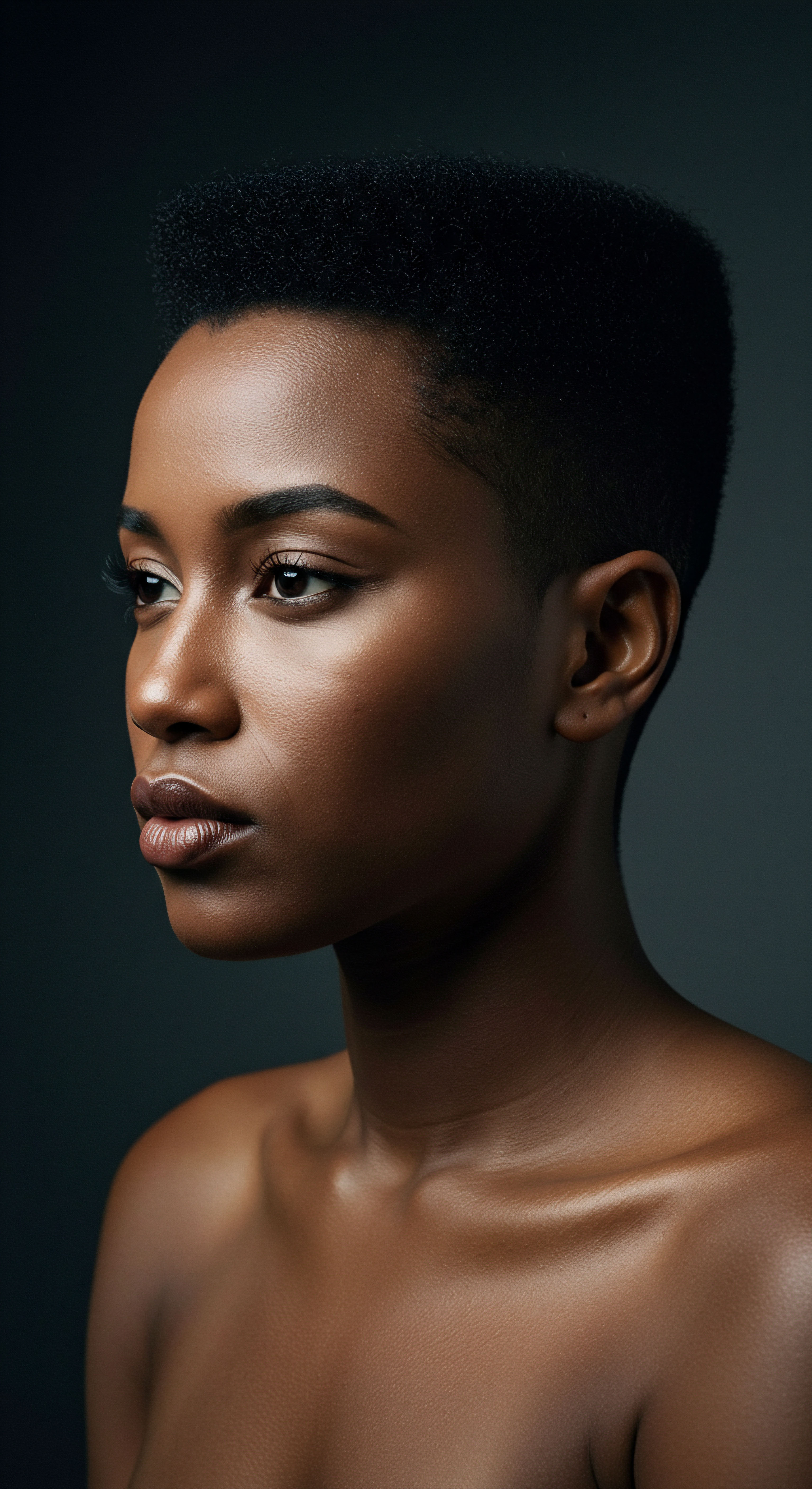
Creating a Nighttime Sanctuary for Strands
The choice of sleeping surface and hair covering forms the cornerstone of effective nighttime hair protection. Traditional cotton pillowcases, while comfortable, are known to absorb moisture from hair, leaving it dry and prone to frizz and breakage. They also create friction as one moves during sleep, further disrupting the cuticle and leading to tangles and mechanical stress.
In stark contrast, silk and satin offer a smoother surface that permits hair to glide without snagging or undue tension. These materials are less absorbent than cotton, meaning they help hair retain its natural oils and applied products, preserving moisture levels throughout the night. This difference is particularly noticeable for textured hair, which naturally tends to be drier.
Choosing silk or satin for nighttime hair protection creates a gentle haven, safeguarding strands from friction and moisture loss.

Strategic Styling for Nocturnal Preservation
Beyond the sleeping surface, the way hair is styled before bed significantly impacts its morning appearance. Loose protective styles are highly recommended for textured hair. These styles minimize friction, guard against split ends, and prevent the formation of irritating knots and tangles that can arise from movement during sleep.
Consider these popular and effective nighttime styles ❉
- Pineapple ❉ Gathering hair loosely at the very top of the head, often with a soft scrunchie, minimizes compression of curls at the back of the head. This method allows the majority of the hair to remain free from friction and maintain its curl pattern.
- Loose Braids or Twists ❉ Creating two-strand twists or large, loose braids before bed can help to keep hair elongated and contained. This approach works with the hair’s natural curl, preventing tangling and preserving definition. For very coily hair, chunky twists are often a preferred choice.
- Buns or Top Knots ❉ A loose bun positioned high on the head can also protect hair from friction and help retain its shape. The key is to avoid tightness, which can lead to tension and breakage.
A study by Dr. Alicia Mendez, a trichologist at the Austin Hair Research Center, noted that switching to silk or satin materials can reduce friction by up to 43% during sleep. This reduction directly translates to less breakage and better moisture retention, as observed in clients who adopted satin caps. This highlights the tangible benefit of these materials in mitigating the mechanical stress and moisture disruption that can occur overnight, especially in varying humidity conditions.

Product Choices for Nighttime Resilience
The products applied before bed also play a pivotal role in how textured hair navigates nighttime humidity. The goal is to hydrate and seal the hair without oversaturating it, which could lead to hygral fatigue if humidity levels are high.
Lightweight leave-in conditioners or hair oils can help to seal in moisture, providing a protective barrier. Ingredients like glycerin can be beneficial in normal humidity, attracting water to the hair, but in very high humidity, they might draw too much moisture from the air, potentially leading to excessive swelling and frizz. Therefore, understanding the dew point and local humidity levels can guide product selection. When humidity is high, products that seal the cuticle, perhaps with silicones or emollients, become more advantageous.
A simple yet potent addition to a nighttime regimen is a deep conditioning treatment once or twice a week. These treatments nourish the hair, restoring flexibility and preparing it to withstand environmental shifts, including changes in humidity.

Relay
How does the very air we breathe, particularly as we sleep, whisper its influence upon the living architecture of textured hair? This question invites us to peer beyond the immediate effects of frizz or lost curl definition and to consider the intricate interplay of biology, environment, and even cultural practice that shapes our hair’s nightly experience. The journey into this understanding requires a synthesis of scientific observation, a sensitivity to ancestral wisdom, and a willingness to question common assumptions, arriving at a profound appreciation for the resilience and specific needs of textured strands.
At its core, the interaction between hair and nocturnal humidity is a complex physicochemical process. Human hair, being hygroscopic, readily absorbs water vapor from the atmosphere. This absorption is not merely superficial; it causes the hair fiber to swell, increasing its diameter and slightly its length.
For textured hair, with its inherent bends and coils, this swelling can be uneven, leading to a disruption of the curl pattern and the familiar phenomenon of frizz. The keratin proteins within the hair cortex, held together by hydrogen bonds, are particularly responsive to these airborne water molecules, leading to temporary structural alterations.

The Science of Hair’s Moisture Dance at Rest
The degree of hair’s response to humidity is often linked to its porosity—how open or closed its cuticle layers are. High porosity hair, with its raised or damaged cuticles, absorbs moisture rapidly but also releases it quickly, making it highly susceptible to environmental fluctuations. Low porosity hair, with tightly bound cuticles, resists moisture entry but retains it well once absorbed. At night, when hair is often covered or resting on surfaces, the microclimate immediately surrounding the head can significantly influence this moisture exchange.
A notable study, “Evaluation of hair humidity resistance/moisturization from hair elasticity,” observed that Hair Water Regain Increases Linearly with an Increase in Relative Humidity (RH) in the Range of 40-85%. Conversely, the remaining percent of hair elasticity decreases linearly with an increase in RH in the range of 50-80%. This data underscores a crucial point ❉ as hair absorbs more water from humid air, it becomes less elastic, making it more prone to mechanical stress and breakage, especially during sleep when movement can cause friction. This suggests that the impact of humidity extends beyond mere aesthetics, touching upon the structural integrity of the hair over time.
Nocturnal humidity can alter hair’s fundamental elasticity, making it more susceptible to damage during sleep.
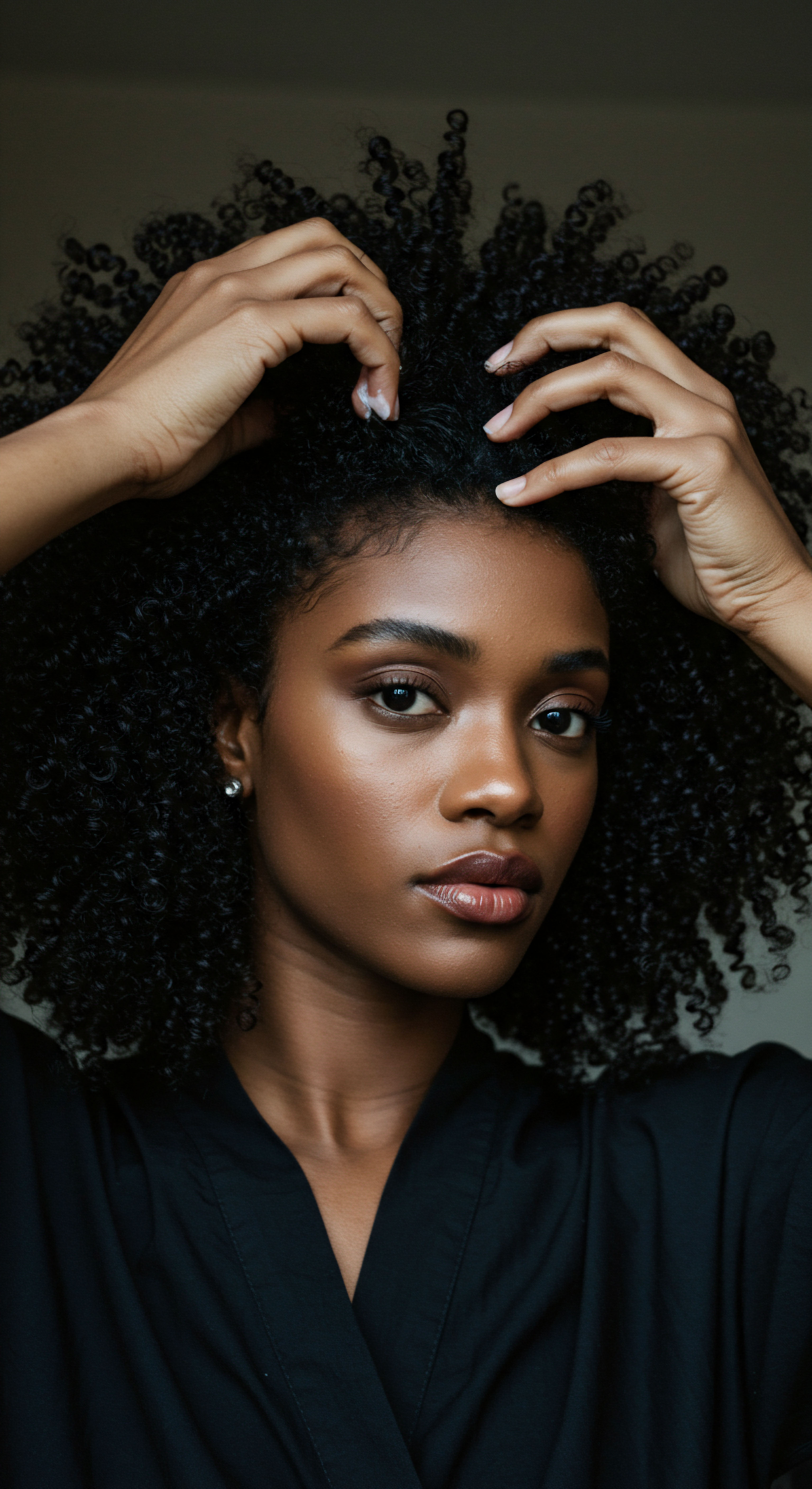
Does Environmental Acclimatization Occur?
A fascinating question arises ❉ can hair acclimatize to consistent humidity levels over time? While hair itself is a non-living protein structure, its overall health and appearance are deeply tied to the scalp’s condition and the body’s systemic wellness. Chronic exposure to high humidity, especially without proper care, can lead to persistent cuticle swelling and hygral fatigue, potentially altering the hair’s texture over time. One anecdotal account describes hair changing from straight and fine to wavy, dry, and rough after moving from a low-humidity environment to a highly humid one and back again, suggesting a prolonged environmental influence on hair’s state.
This long-term environmental interaction highlights the importance of consistent care tailored to one’s climate. The scalp, which is a living organ, responds to environmental factors like temperature and moisture, which can indirectly influence hair health.

The Cultural Echoes of Nighttime Hair Protection
Beyond the scientific mechanisms, the practice of protecting textured hair at night carries significant cultural weight. For generations, communities with textured hair have developed and passed down traditions of nighttime hair care, long before scientific studies quantified the benefits. The use of head coverings, such as bonnets and scarves, is deeply rooted in these traditions, serving not only practical purposes of preservation but also as symbols of self-care and identity.
These practices, like wrapping hair in silk or satin, are not merely about preventing frizz; they are about honoring the hair’s natural state, preserving styles that take considerable time and effort, and minimizing the daily manipulation that can lead to breakage. The communal knowledge surrounding these rituals speaks to a sophisticated understanding of hair’s vulnerability and resilience, a wisdom cultivated through lived experience and passed down through families.
The shift from absorbent cotton to smooth silk or satin pillowcases and bonnets, now backed by scientific findings on friction reduction and moisture retention, represents a convergence of traditional wisdom and modern understanding. This underscores the value of looking to diverse sources of knowledge when addressing the needs of textured hair.

The Interconnectedness of Sleep, Hair, and Humidity
Sleep itself is a period of repair and regeneration for the body, including hair follicles. Hormonal balance and nutrient absorption, which are crucial for hair growth and scalp health, are optimized during quality rest. When sleep is disrupted, stress hormones can increase, potentially leading to hair shedding or altered texture.
The bedroom environment’s temperature and humidity levels directly influence hair health overnight. Air that is too dry can strip hair of its natural moisture, leading to dryness and frizz. Conversely, high humidity, as discussed, can lead to excessive swelling. Creating a balanced sleeping environment, perhaps with a humidifier in dry climates, can contribute to overall hair well-being.
| Environmental Factor Low Humidity / Dry Air |
| Effect on Hair Strips natural moisture, causes dryness, brittleness, static, flyaways. |
| Environmental Factor High Humidity / Damp Air |
| Effect on Hair Causes swelling, frizz, loss of definition, potential hygral fatigue. |
| Environmental Factor Cotton Pillowcases |
| Effect on Hair Absorb moisture, create friction, lead to dryness, frizz, breakage. |
| Environmental Factor Silk/Satin Surfaces |
| Effect on Hair Reduce friction, retain moisture, preserve styles, lessen tangling. |
| Environmental Factor A mindful sleep environment directly supports hair health and appearance. |
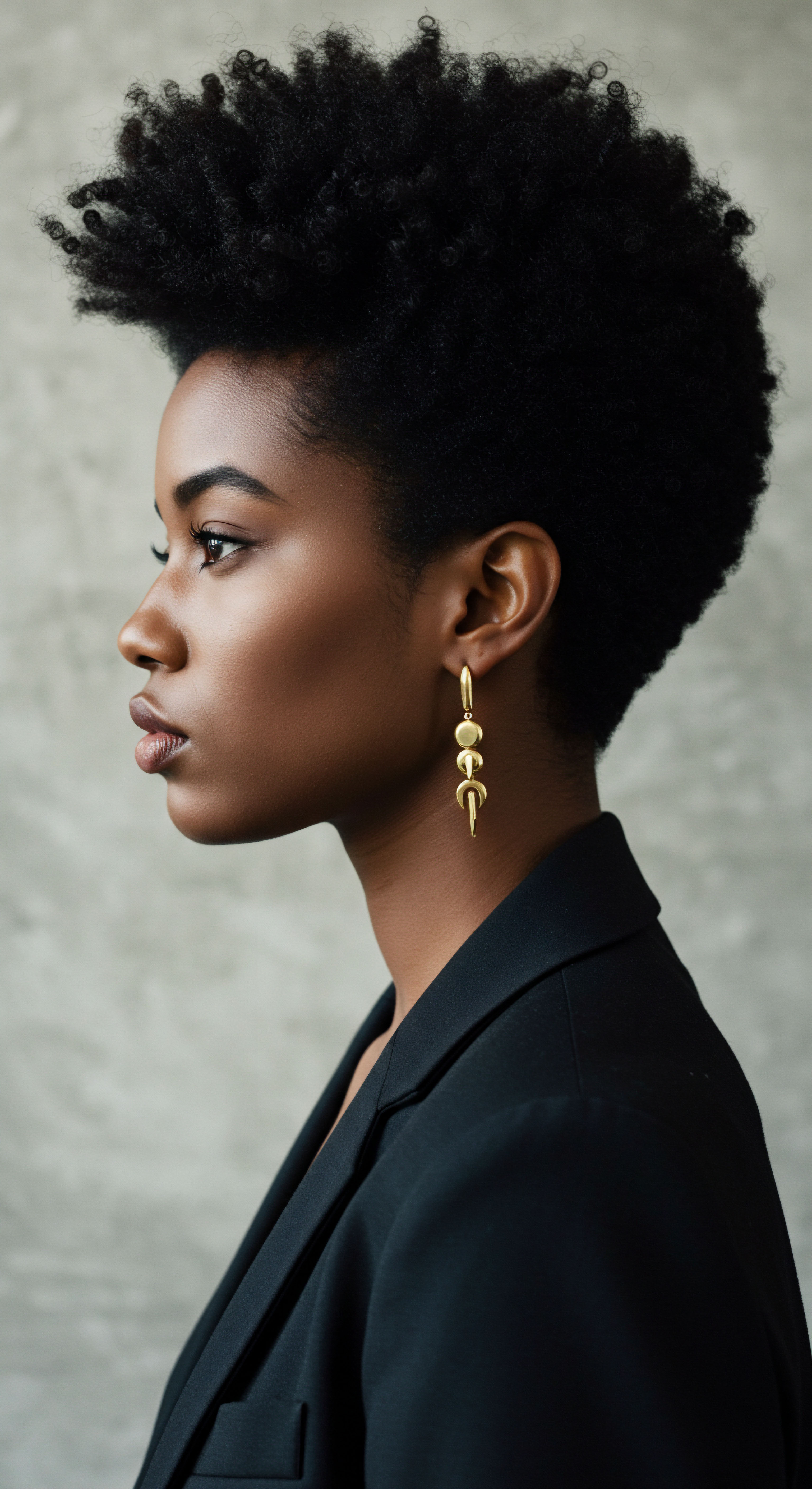
Reflection
The nocturnal hours, far from being a simple pause in our hair’s journey, represent a profound period of interaction with the environment. The subtle presence of air humidity, often unnoticed by our conscious minds, actively shapes the integrity and appearance of textured strands. We learn that hair, a testament to our lineage and individuality, responds with a dynamic interplay of swelling, contracting, and bond formation.
The choices we make before rest—from the fabric of our pillowcase to the gentle styles we adopt—are not mere conveniences, but acts of deep care that acknowledge this silent conversation between hair and atmosphere. As we continue to learn, our rituals grow more intentional, allowing our hair to awaken not merely preserved, but truly renewed, ready to greet the day with its full, inherent splendor.

References
- Robbins, Clarence R. Chemical and Physical Behavior of Human Hair. Springer, 2012.
- Feughelman, M. Mechanical Properties of Keratin Fibers. Springer, 1997.
- Juez, L. and Gimier, M. Hair ❉ A Study of Its Properties. Academic Press, 1983.
- Dias, Márcio. Hair Cosmetics ❉ An Overview. Springer, 2015.
- Watt, I.C. and Leeder, J.D. “The moisture absorption isotherms of virgin and various modified wool fibers.” Journal of the Textile Institute, 1972.
- Doherty, Richard F. and Shore, M.L. “The Chemistry of Hair.” CRC Press, 2003.
- Stromberg, Peter. “The Physics of Hair.” University of California Press, 2005.
- McKay, Tanya. “Curly Hair Chemistry.” Curly Girl Collective Publishing, 2019.
- Dias, Márcio. “Hair and the environment.” Trichology ❉ A Scientific Approach, 2008.
- Woodruff, John. “Hair Care Science.” Allured Business Media, 2002.
- Boer, Marcel, et al. “Evaluation of hair humidity resistance/moisturization from hair elasticity.” Journal of Cosmetic Science, 2005.
- Gavazzoni, Marcelo. “Hair and Scalp Diseases ❉ A Comprehensive Guide.” Thieme, 2020.
- Rushton, David H. “Hair as a biological indicator of nutritional status.” Clinical and Experimental Dermatology, 2002.
- Messenger, A.G. and de Berker, D.A. “The Biology of Hair.” Cambridge University Press, 2007.